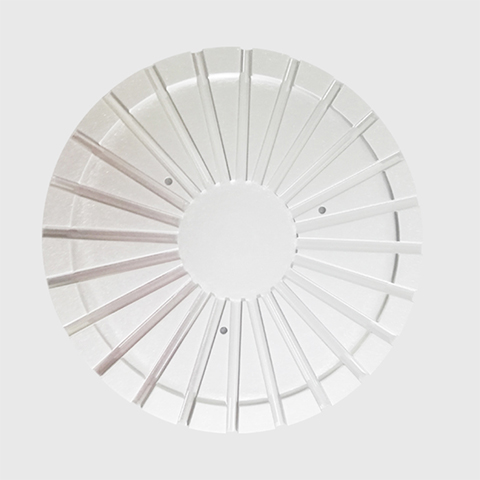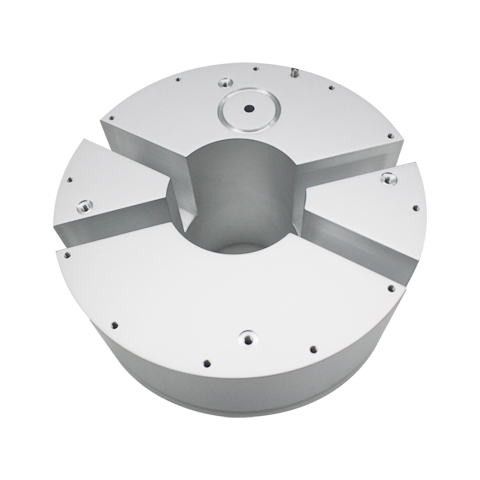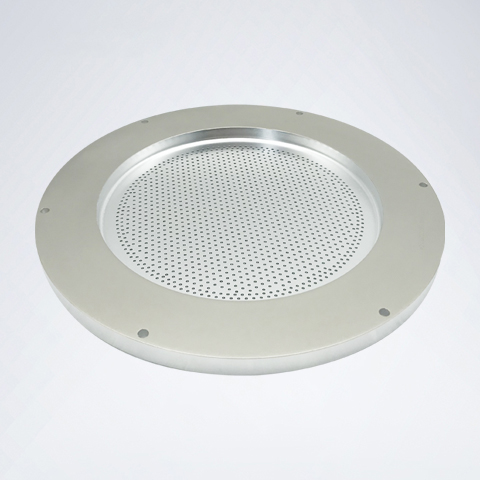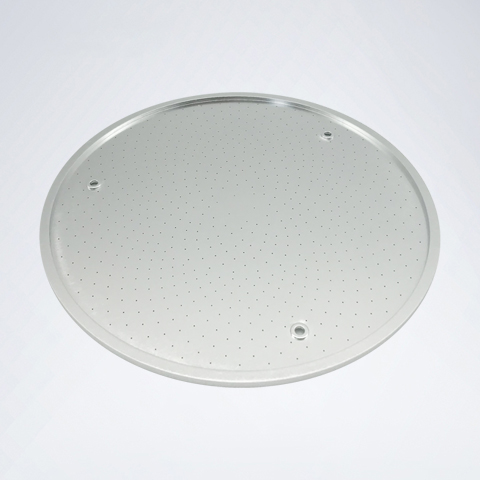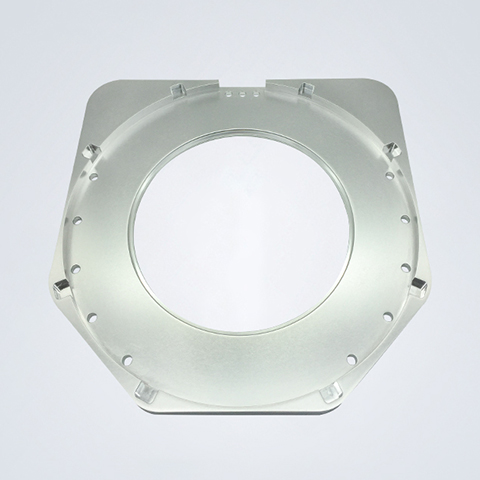The semiconductor industry, often described as the backbone of modern technology, depends on precision and reliability to meet its increasingly complex demands. Central to this precision are the tools and equipment designed by Applied Materials (AMAT), one of the most prominent players in the semiconductor equipment market. Maintaining and optimizing these tools requires a comprehensive understanding of AMAT Parts—the components that enable the functionality and efficiency of AMAT equipment. This article provides an in-depth exploration of AMAT Parts, their types, roles, procurement challenges, and best practices to ensure manufacturers stay ahead in this high-stakes industry.

What Are AMAT Parts?
AMAT Parts are the individual components, consumables, and replacement parts specifically designed for Applied Materials' semiconductor manufacturing equipment. These parts are engineered to meet the rigorous demands of processes such as deposition, etching, and chemical-mechanical polishing (CMP).
Types of AMAT Parts
-
Original Equipment Manufacturer (OEM) Parts
- Produced by AMAT or under its direct oversight.
- Guaranteed for compatibility and performance, ensuring equipment operates as designed.
-
Certified Third-Party Parts
- Manufactured by external vendors but tested and approved by AMAT.
- Provide a cost-effective alternative without compromising reliability.
-
Compatible Parts
- Non-certified but designed to fit AMAT equipment.
- Require careful validation to avoid operational risks.
Why Are AMAT Parts Essential for Semiconductor Manufacturers?
1. Maximizing Equipment Performance
The advanced processes involved in semiconductor manufacturing require precise control. AMAT Parts, particularly OEM and certified components, maintain this control by ensuring equipment operates at peak efficiency.
2. Reducing Downtime
Unplanned equipment failures can cost manufacturers millions in lost productivity. High-quality AMAT Parts significantly reduce the risk of downtime by enhancing reliability.
3. Meeting Industry Standards
The semiconductor industry operates under strict standards for precision, cleanliness, and performance. AMAT Parts are designed to comply with these requirements, minimizing contamination and ensuring process consistency.
4. Optimizing Cost Efficiency
While premium parts may have higher upfront costs, their durability and performance often translate to long-term savings by reducing maintenance needs and increasing throughput.
Key Types of AMAT Parts and Their Functions
To truly appreciate the role of AMAT Parts, it is important to examine the key categories and their specific contributions to semiconductor equipment.
1. Mechanical Parts
Mechanical components form the structural and motion-control backbone of semiconductor equipment.
| Component | Examples | Function |
|---|---|---|
| Bearings | Ball bearings, roller bearings | Ensure smooth rotational or linear movement within precision machinery. |
| Seals | Gaskets, O-rings | Prevent leaks and contamination in vacuum chambers and fluid systems. |
| Actuators | Linear actuators, rotary actuators | Control precise mechanical movements during wafer handling or material deposition. |
- Bearings: In wafer-handling systems, bearings ensure stable and repeatable movement. For example, roller bearings allow the smooth rotation of robotic arms.
- Seals: High-performance seals maintain vacuum integrity, critical for processes such as physical vapor deposition (PVD).
- Actuators: Actuators enable precise positioning, crucial for aligning wafers in lithography or inspection tools.
2. Electronic Parts
The electronic components of AMAT equipment handle monitoring, control, and automation.
| Component | Examples | Function |
|---|---|---|
| Sensors | Pressure sensors, temperature sensors | Monitor real-time environmental and process conditions. |
| Control Boards | PCBs, driver boards | Manage signals and ensure communication between equipment subsystems. |
| Power Modules | Voltage regulators, transformers | Provide stable and efficient power delivery to equipment components. |
- Sensors: For instance, temperature sensors monitor process chambers to maintain the thermal precision required for chemical vapor deposition (CVD).
- Control Boards: These act as the brain of AMAT equipment, ensuring that subsystems like wafer transport and process modules work in harmony.
3. Consumables
Consumables are replaceable parts that ensure continuous operation without contamination or degradation of performance.
| Component | Examples | Function |
|---|---|---|
| Filters | Gas filters, liquid filters | Remove impurities from process gases and liquids to protect wafers. |
| Vacuum Oils | Pump lubricants | Maintain the performance and lifespan of vacuum pumps. |
| Target Materials | Copper, aluminum | Used in sputtering processes to deposit thin films on wafers. |
- Filters: Gas filters prevent particle contamination during processes like etching.
- Target Materials: High-purity materials ensure uniform thin-film deposition, essential for advanced chip designs.
4. Optical Components
Optical parts enable precise measurements and alignment in AMAT equipment.
| Component | Examples | Function |
|---|---|---|
| Lenses | Focusing lenses | Focus laser beams for precise etching or inspection. |
| Mirrors | Reflectors, beam splitters | Direct and control light paths within equipment. |
| Laser Modules | Infrared, ultraviolet lasers | Enable high-precision measurements and material processing. |
- Lenses and Mirrors: These are critical in lithography tools, where light is used to pattern circuit designs onto wafers.
Challenges in Procuring AMAT Parts
1. High Costs
OEM parts come at a premium due to their stringent quality standards, leaving manufacturers to balance cost and performance.
2. Counterfeits in the Market
The prevalence of counterfeit parts poses significant risks, including equipment failure and compromised safety.
3. Compatibility Issues
Third-party or compatible parts may not always meet the exact specifications required, potentially leading to inefficiencies.
4. Supply Chain Disruptions
Global supply chain challenges can delay the availability of critical components, impacting production schedules.
Best Practices for Managing AMAT Parts Inventory
1. Proactive Maintenance
Implementing a preventive maintenance schedule ensures that parts are replaced before they fail.
2. Reliable Partnerships
Collaborate with trusted distributors, like JUNR, to secure genuine parts and avoid counterfeits.
3. Inventory Optimization
Maintain a balanced inventory of critical parts to minimize downtime without overstocking.
4. Data-Driven Forecasting
Use digital tools to monitor part usage and predict future requirements accurately.
How JUNR Supports Your AMAT Parts Needs
At JUNR (website), we specialize in providing high-quality AMAT Parts to semiconductor manufacturers worldwide.
Our Strengths:
- Comprehensive Inventory: From mechanical components to consumables, JUNR offers a vast selection of parts.
- Quality Assurance: All parts undergo rigorous checks to meet industry standards.
- Cost-Effective Solutions: Competitive pricing without compromising quality.
- Expert Support: Technical teams available to guide part selection and ensure compatibility.
Conclusion
AMAT Parts are indispensable for the optimal performance of Applied Materials equipment in semiconductor manufacturing. From ensuring precision and reliability to minimizing downtime, these components are at the heart of advanced chip production. Manufacturers must prioritize quality and maintain strong partnerships with trusted suppliers like JUNR to navigate the challenges of sourcing and inventory management effectively. By investing in high-quality AMAT Parts, manufacturers can achieve greater efficiency, productivity, and long-term success in this dynamic industry.




